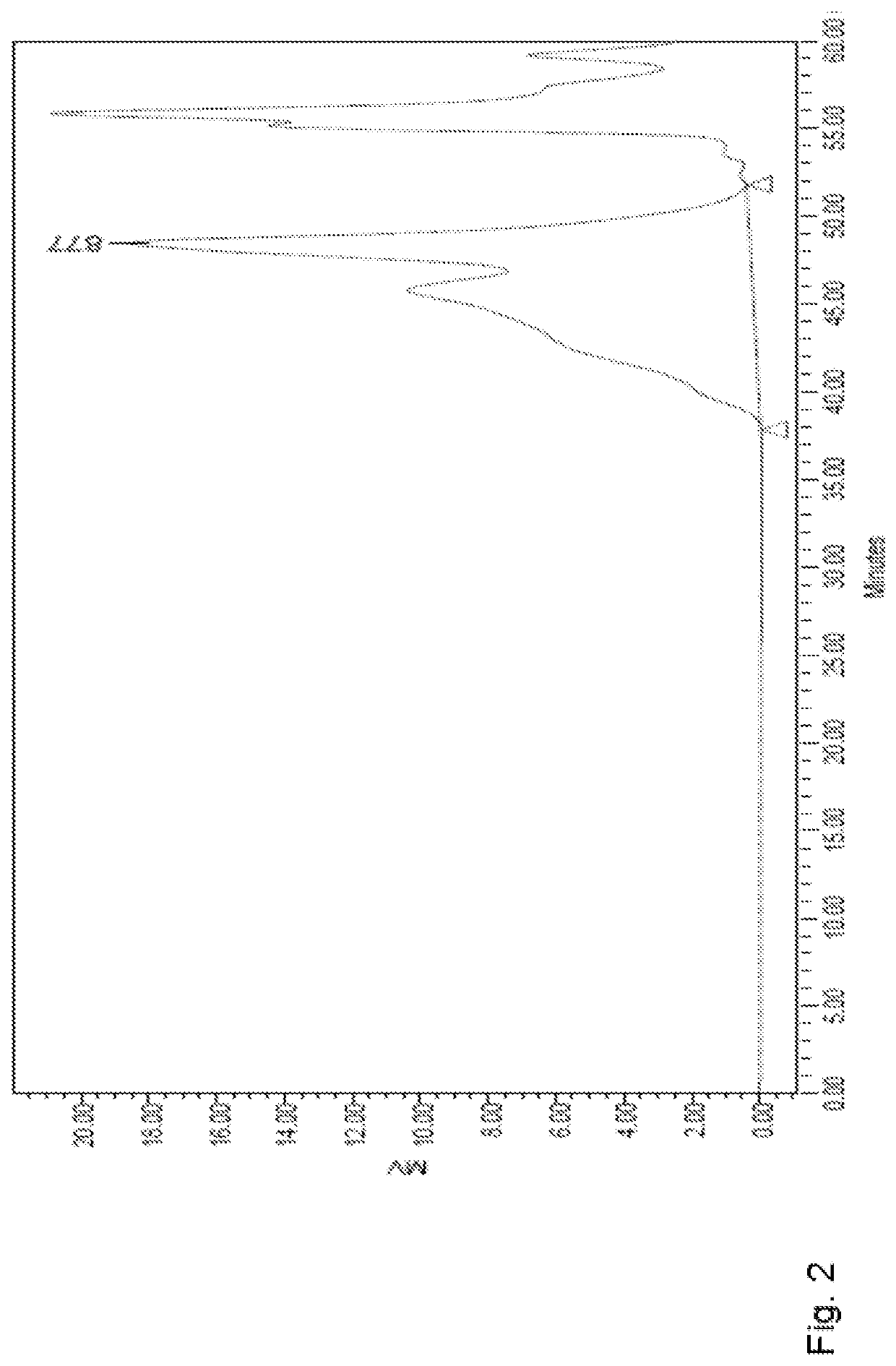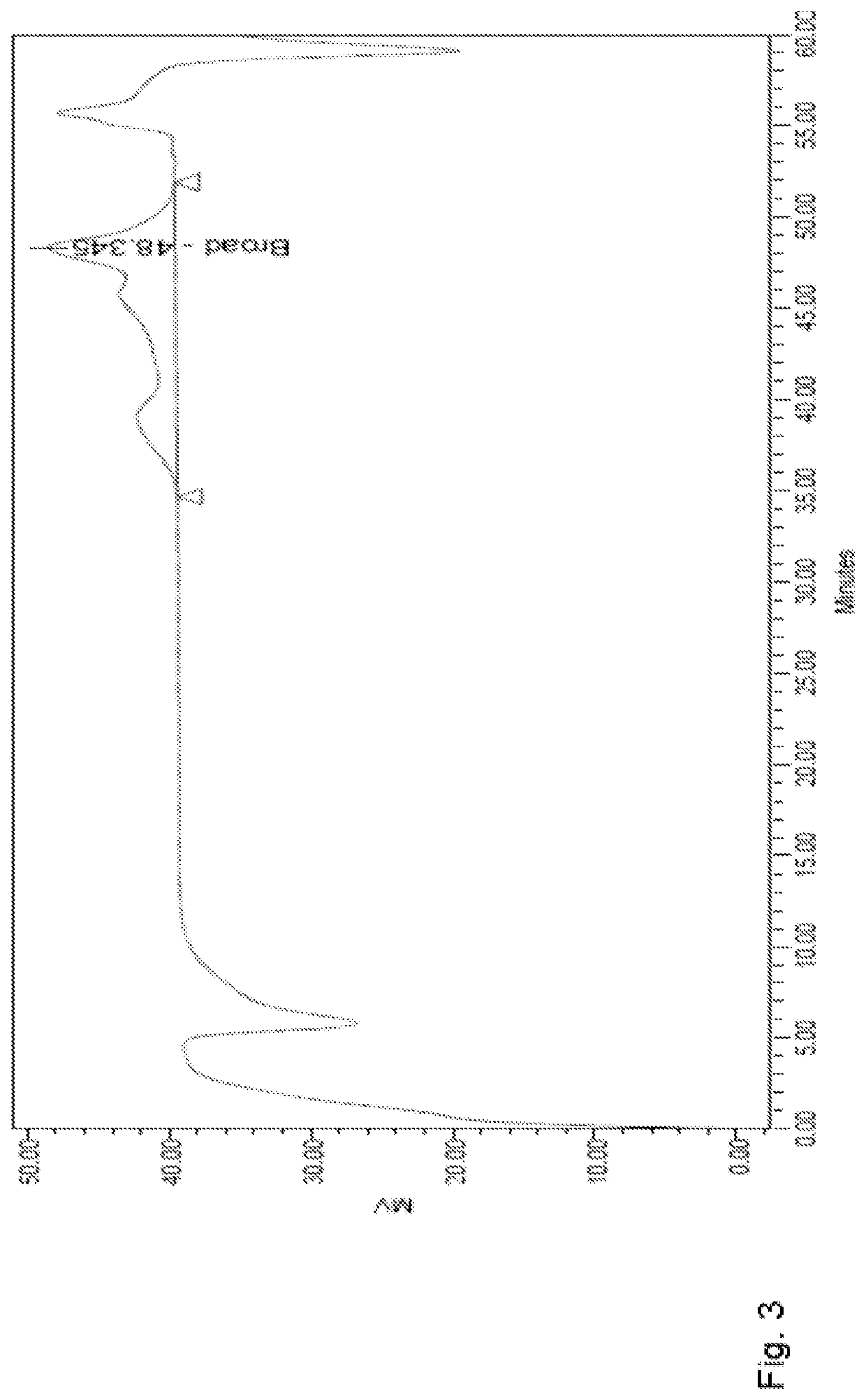Method for forming a biodegradable or recyclable hybrid material composition
- Summary
- Abstract
- Description
- Claims
- Application Information
AI Technical Summary
Benefits of technology
Problems solved by technology
Method used
Image
Examples
example 1
[0113]Solution 1—Preparation of Biodegradable Polymer Water Solution
[0114]DI water, 376 g, was added to 24 g of Poval 25-98R powder (PVA), weighed into a round bottom flask. The mixture was stirred at room temperature for 15 minutes. After a homogeneous, foggy solution was obtained, the round bottom flask was equipped with condenser and placed on oil bath. The mixture was heated gradually to 90° C. during 45 minutes, and kept at 90° C. for 15 minutes. After a clear solution was obtained, the hot mixture was filtrated by using 25 micron filter.
[0115]Solution 2—Preparation of Biodegradable Polymer Water Solution
[0116]DI water, 376 g, was added to 24 g of Exeval HR3010 powder (PVOH), weighed into a round bottom flask. The mixture was stirred at room temperature for 15 minutes. After a homogeneous, foggy solution was obtained, the round bottom flask was equipped with a condenser and placed on oil bath. The mixture was heated gradually to 90° C. during 45 minutes, and kept at 90° C. for ...
example 2
[0123]Solution 1—Preparation of Biodegradable Polymer Water Solution
[0124]Prepared as the corresponding solution in example 1.
[0125]Solution 2—Preparation of Biodegradable Polymer Water Solution
[0126]Prepared as the corresponding solution in example 1.
[0127]Solution 3—Preparation of Polysiloxane Prepolymer
[0128]BTESE (20.0 g, 0.05640 mol), GPTMS (105.0 g, 0.44428 mol) and 2-propanol (51 g) were weighted into a round bottom flask. The monomer mixture was stirred at room temperature for 15 minutes, then 0.01M of nitric acid (26.9 g) was added dropwise at room temperature during 15 minutes. The reaction mixture was stirred at room temperature for 3 hours, and diluted by 2-propanol (100.0 g).
[0129]The molecular weight of the polymer was in the range 1000-20 000 g / mol based on Gel Permeation Chromatography (GPC) measurement.
[0130]Solution 4—Preparation of Final Material
[0131]Solution 1 (5 g) and solution 2 (10 g) were combined into a round bottom flask, and stirred at room temperature fo...
example 3
[0133]Solution 1—Preparation of Biodegradable Polymer Water Solution
[0134]Prepared as the corresponding solution in example 1.
[0135]Solution 2—Preparation of Biodegradable Polymer Water Solution
[0136]Prepared as the corresponding solution in example 1.
[0137]Solution 3—Preparation of Final Material
[0138]Solution 1 (5 g) and solution 2 (10 g) were combined into a round bottom flask, and stirred at room temperature for 15 minutes. To the clear mixture, 0.6 g of 1-propanol; 0.03 g (0.00016 mol) of MTEOS; and 0.15 g of propylene carbonate were added at room temperature.
[0139]The reaction mixture was stirred at room temperature for 15 min. in the flask, equipped with reflux condenser, and transferred to an oil bath. The mixture was heated gradually to 88° C. during 45 minutes, and kept at 88° C. for 60 minutes. After a clear solution was obtained, the hot mixture was cooling down by stirring at room temperature during 12 hours, and filtrated by using a 0.45 PTFE filter.
PUM
| Property | Measurement | Unit |
|---|---|---|
| Temperature | aaaaa | aaaaa |
| Thickness | aaaaa | aaaaa |
| Molar mass | aaaaa | aaaaa |
Abstract
Description
Claims
Application Information
 Login to View More
Login to View More - R&D
- Intellectual Property
- Life Sciences
- Materials
- Tech Scout
- Unparalleled Data Quality
- Higher Quality Content
- 60% Fewer Hallucinations
Browse by: Latest US Patents, China's latest patents, Technical Efficacy Thesaurus, Application Domain, Technology Topic, Popular Technical Reports.
© 2025 PatSnap. All rights reserved.Legal|Privacy policy|Modern Slavery Act Transparency Statement|Sitemap|About US| Contact US: help@patsnap.com



